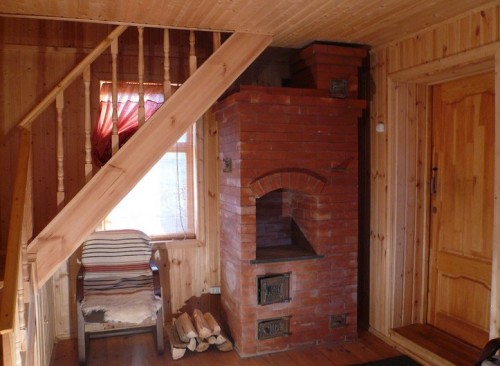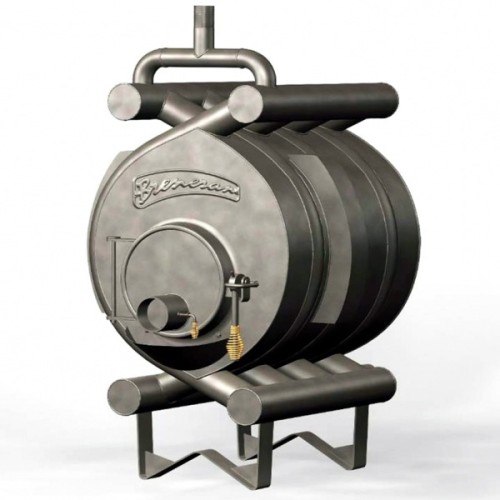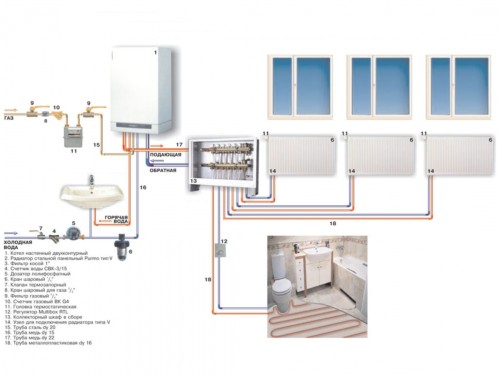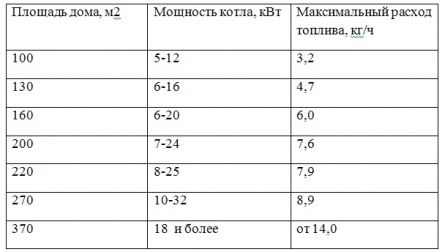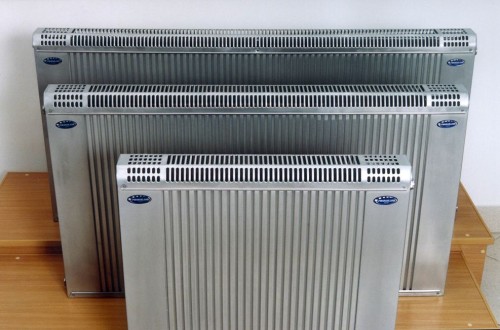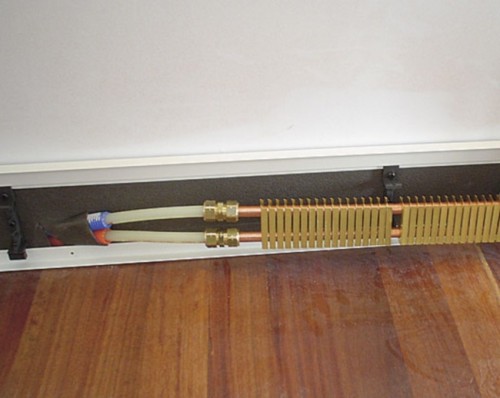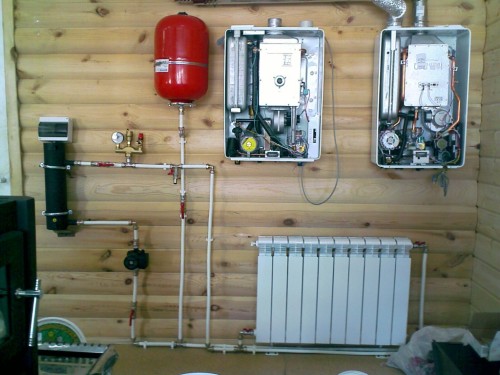For summer houses, one of the most relevant moments is the organization of heating. Although most spend a little time there, but this question is still important. Especially when the window is raw and cool. Anyone wants to relax in a dry and warm room. So, where to start doing the heating of the country house? First of all, you need to collect all the necessary documents. This requires the rules. Next, you should decide which heating system will be mounted, and what materials are necessary. Next, we will tell you how to make heating at the cottage.
Content
Basic moments
Country houses were erected at different times from various materials. Therefore, when selecting heating for cottages, it is recommended to take into account the following points:
- Find out what the walls and the basis of the construction are erected.
- It is also necessary to clarify whether there are insulation materials in the construction of the house. The fact is that insulated buildings can hold heat inside much longer.
- It should be determined how much the construction is fires. The fact is that there are heating systems in the country, which can lead to fire.
- In addition, you need to know which coolants you are most convenient to purchase. Perhaps there is a location on sale of firewood, coal or diesel fuel. Obviously, the further you have to go beyond the fuel, the higher the cost of heating the country house will be.
- Also, the cost of heating is influenced by the cost of storage of the coolant.
Existing heating options today can be divided into several groups.
So, depending on the coolant used, it happens:
- electric
- steam
- air
- heated hot water.
By source of energy, heating can be divided as follows: electric, heating on gas, on liquid fuel, on solid fuel (coal or firewood).
Each heating system has its advantages and disadvantages. The most expensive view is the wasolar, and the cheapest is the heating of giving gas. But it is the most difficult gas to carry out the gas. Therefore, heating of this type in the country is used very rarely.
How to determine the pipeline layout scheme
When choosing a heating device, you need to repel from how pipes are located in the country house. From the same depends the calculation of the boiler power. Today there are two schemes of dacha heating:
- one-tube,
- two-pipe.
Consider some more details each of these species:
- Single-tube scheme. On such a system, the easier and more economical to mount heating. This is due to the fact that this does not need to carry out an additional pipeline. Most of all this option is suitable for heating a country house with an area of \u200b\u200bup to 90 sq.m.
- Two-pipe scheme. It allows you to damn the premises of a large area, both in one-storey and in a two-story building. The distribution of heat in both cases occurs between all heating devices is uniformly. Circulation in the system can be both natural and forced. In the latter case, the circulation pump is installed. In any case, it is very important to withstand the slope of the heating pipes when they are installed.
It is recommended to use systems with vertical risers. For heating, the attic with a large inclination of the roof Using the horizontal layout scheme is prohibited. Therefore, it is best to pull the country houses with such a attic that exactly on a two-pipe diagram with a natural circulation using the upper or lower wiring. If the boiler is installed in the basement, the height of the pipe must be more than 11 m.
Thus, the main criteria for choosing the heating method of the country house are as follows:
- the cost of coolant and equipment;
- available pipe location system in a summer cottage;
- the cost of mounting heating at the cottage;
- the price of maintenance and repair of the heating system.
In addition, you need to estimate how much approximately you are going to spend at the cottage in the cold season. After all, it is precisely at such a period of heating.
Choosing a boiler
Next, when adjusting the heating system in the summer house, it is necessary to correctly select the power of the boiler. It is calculated depending on the parameters such as the area of \u200b\u200bthe construction, the specific power of the installed boiler. To fulfill the correct calculation, you must know the area of \u200b\u200bthe country house. Next, it will be necessary to divide this value to the specific power. About 25% of power should be added to the result. It will be a margin in case of severe frosts.
To determine the power of the unit, you can use the table:
Today, boilers are usually equipped with smart machines that can adjust the temperature regime, as well as control the circulation pump and hot water circuit. Due to temperature control, the aggregates can work most of the time in the so-called "gentle mode", while saving fuel.
Depending on the installation site, the boiler can be built-in or outdoor. The choice of one or another depends on you. Next, when installing heating in the country, you need to prepare a place to install the heating unit. To do this, the premises must be free from the existing furniture and other items that can interfere with the installation work.
The main characteristics of radiators
When you chose the boiler, it's time to pick up suitable heating devices, which usually use radiators or dacha heating batteries. Consider how to choose them.
Basically, these systems differ in manufacturing material:
- For example, aluminum radiators are on sale. They are most suitable for the private sector. Their advantages include fast heating, good heat transfer and a good appearance. Of the disadvantages, it is highlighted - high cost, poor tolerance of pressure drops. In addition, they should not be used in the premises where there is already central heating. Less sensitive to pressure drops Bimetallic radiators. Their base is made of steel capable of withstanding any pressure and its drops, which is characteristic of central heating. It is on this pipe that the heated water is moving (or another coolant).
- Radiators are often manufactured from steel. Thanks to its quality and reasonable price, this version of the equipment has acquired a fairly popularity of consumers. From the disadvantages, it can be noted only that when the steel is oxidation, steel occurs. It threatens the formation of rust. Most of all, such radiators are suitable for use in closed systems, of which water does not merge in the summer.
- One of the most frequently used options are cast iron radiators. Their benefits include durability. Such radiators can withstand almost everything. So, they are not terrible pressure jumps, poor quality water, unknown chemical composition, frequent hitting of air bubbles.
For the heating system, high-quality pipes are also needed. Only choose the appropriate version without the right knowledge is sometimes not easy. To date, it is possible to find pipes made of steel, metalplastic, polypropylene or copper. Polypropylene pipes are considered to be the most suitable option for private cottage houses.
"Warm plinth"
For the heating of summer houses, a panel system is often used, which was called "Warm Plinth". It is mounted around the perimeter of the room. When it is used, the distribution of the heat generated along the wall is coming from where it rises up. This creates a heat shield that does not allow heat out of the room. In addition, it prevents the formation of condensate on the walls. When using such a device, a uniform warming of the walls of the room occurs. That is, there are no cold zones and freezing corners. In addition, the heated walls begin to radiate inward heat, which is why it becomes more comfortable.
What is this system? This is a folding box of aluminum height of 140 mm and 30 mm width. It is mounted in place of the usual plinth. As a coolant in such a device, water or antifreeze is usually used. Inside the similar case is a heat exchanger consisting of a pair of copper pipes. Warm plinth connects almost by the same scheme as the usual radiator. There are special devices on sale that are connected directly to the power grid.
When installing a "warm plinth", it must be connected to the feed and reverse pipeline, subordinated from the collector. To do this, you can use PVC or polyethylene pipes. Each "warm plinth" can be equipped with a thermostat, with the help of which regulate the temperature, maintain it at a minimum level, when the hosts are missing, and thereby save heat, but retain comfortable conditions.
A similar heating system, which includes a "warm plinth" and an electrocotel, allows you to maintain the minimum temperature in the country house when there are no owners. It may seem that such heating requires a lot of costs. But in fact, the electric boiler is very suitable for a well insulated giving a small size. It can be installed independently. It has safety and reliability.
Heating for cottage electric
Perhaps it is an electric flocity, as mentioned above, will be the best option for the heating of a country house. It has a lot of advantages: it is easy to mounted, does not require the installation of the chimney (unlike the furnace for the heating of cottages) and the separation of a separate room. But, the most important thing is that such equipment is equipped with a GSM unit, which allows you to control the operation of the unit remotely using a conventional mobile phone.
Such a boiler is safe enough, there is no open fire in it. It is capable of working almost at any temperature of the coolant. In addition, he can independently restore his work after a forced stop, due to the cessation of electricity supply, which could occur, for example, in case of failure. Of the disadvantages, you can only distinguish high costs of such equipment - electricity can still be called cheap. Therefore, every heat calorie, which is produced by such an aggregate, should not be wasted. To do this, the cottage needs to be insulated, which will reduce heat loss. In addition, more efficient heating devices should be used, and not simple radiators.


